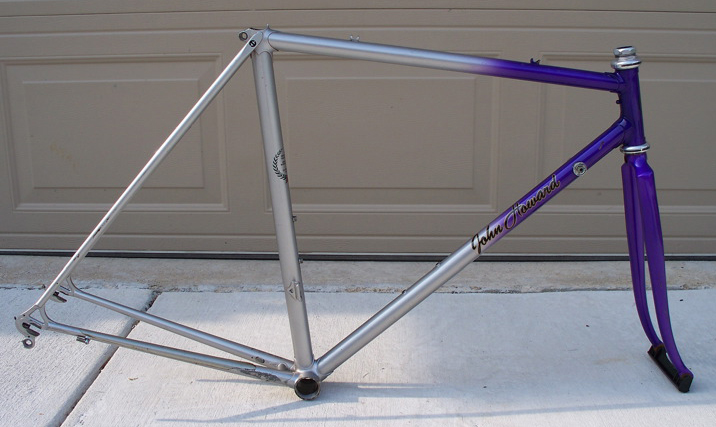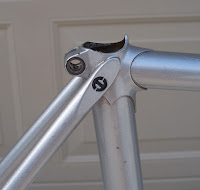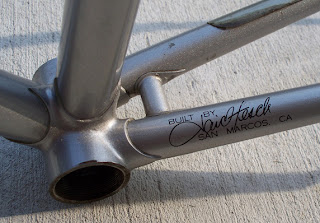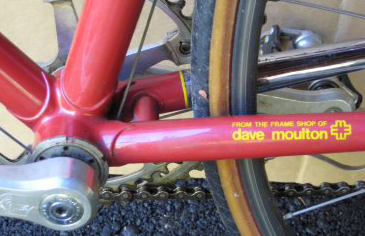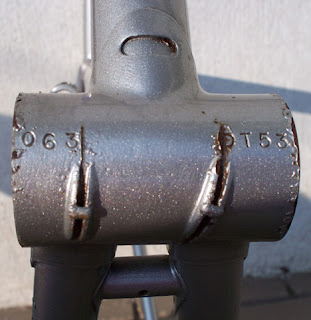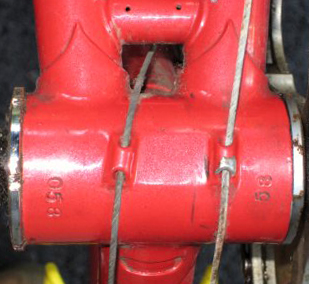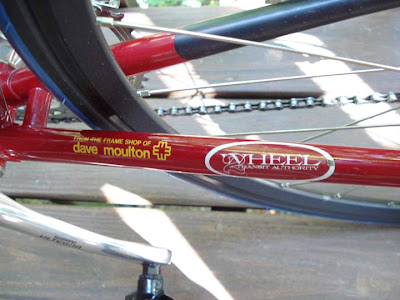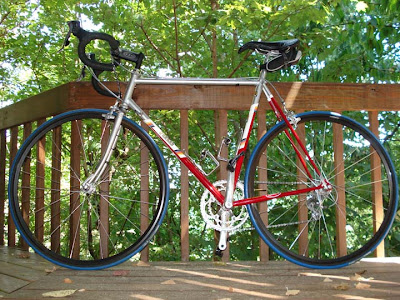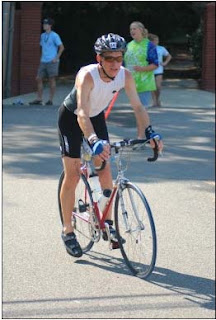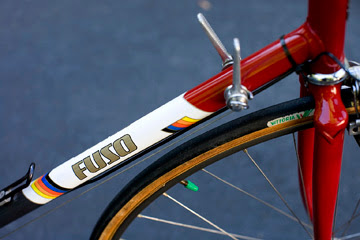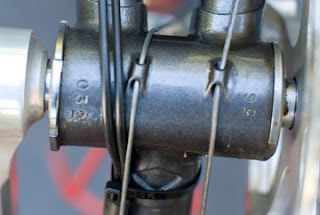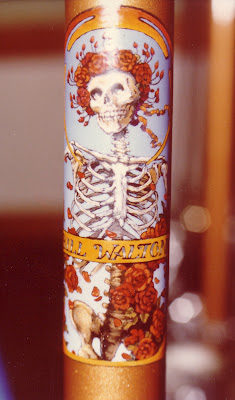Russ Denny
 Thu, September 20, 2007
Thu, September 20, 2007 
Russell Denny is my ex-apprentice who took over my framebuilding business when I left in 1993.
He still runs the business today in the little desert town of Hemet, in Southern California.
Russ came to work for me in my San Marcos, California frameshop in 1985. He was 18 years old and fresh out of high school; he had been recommended to me by a friend of a friend. Russ is of Native American origin and is proud of his heritage.
What I liked about Russ was that he knew nothing about bikes or framebuilding, but at the same time he had scored well in woodshop at school and had made furniture. In other words he had the makings of a craftsman, but had no pre-conceived ideas about framebuilding or what it entailed.
I had had some bad experiences prior to this with young people who had contacted me, begged me to take them on as an apprentice. They always agreed to start at the bottom, but without exception after a very short time grew tired of filing dropouts and wanted to plunge right in and start building a complete frame.
In the case of Russ Denny, here was a young man who was not only prepared to spend the first few years doing menial tasks like slotting chainstays and seatstays and mitering tubes, he really enjoyed it.
 (Left, is a picture from the 1980s of a very young Russ Denny tapping the bottom bracket thread in Fuso frames.)
(Left, is a picture from the 1980s of a very young Russ Denny tapping the bottom bracket thread in Fuso frames.)I had him totally master one task before he moved on to the next. His first attempts at brazing were brazing dropouts into chainstays and adding certain braze-ons to a frame. Five years later Russ had mastered every aspect of the craft of framebuilding.
It was the 1990s and the business was changing rapidly. The demand for road bikes was falling as the Mountain Bike grew in popularity. We tried to switch production but in the first place my heart was not really into building mountain bikes, and there were other established builders of MTBs who had their own following.
I was ready to close up shop, liquidate all the tools and equipment and move on, but I had Russ to think of. He had worked for me for over five years and framebuilding was the only skill he had. I could no longer afford to pay him but he stayed on and managed to get a few orders for his own custom mountain bikes, and he also built frames for Quintana-Roo for the Triathlon market.
This improved his skill as a frame builder and after eight years he could do anything that I could do. In fact in one aspect, namely fillet brazing, he was better than me, because of all the oversize tube MTB frames he had built.
By 1993 it got to the stage where I could no longer keep the business going. My whole business was reliant on a nationwide dealer network, and dealers no longer sold road bikes. Russell seemed to think he could survive on his own, and he did so by giving up his apartment and sleeping in the frameshop. I left the business and took other employment.
Today, Russ Denny has to be one of the most qualified and experienced framebuilders around. As I mentioned when I left in 1993 his skill level was equal to my own, and since then he has added another 14 years experience to this; a total of 22 years.
Russ survived by cutting back on expenses, and starving a little. He also took the business to the next level and started building in new materials as the market demanded. I probably would not have done this because I am too rooted in the past, in tradition. However, Russ was able to move forward and take these ‘old skool’ values in craftsmanship, and design, and apply it to the new.
(Above, a Russ Denny carbon fiber tube bike with aluminum lugs.)
He has gone on to build frames in aluminum, and aluminum and carbon fiber mix, and can still build a frame in steel, both lugged and filet brazed. He offers the best of both worlds. He still incorporates my design philosophies regarding fit and is one of the few people around who can build you a custom CF frame.
Russ has recently put up a new website with contact information and more pictures and details of his frames.
 Dave Moulton | Comments Off |
Dave Moulton | Comments Off | 

















